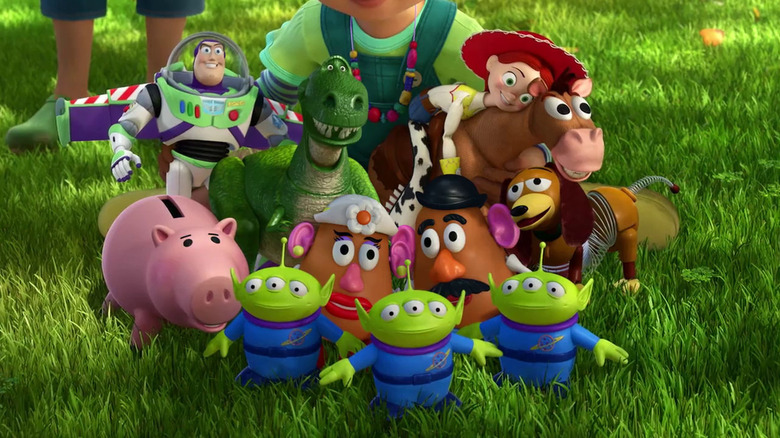“Inside Out” is an emotional film. (Its sequel is, too — only for completely different causes.) Disney Pixar’s inside gut-check of a movie hit audiences of all ages in all of the feels, leaving them wet-eyed as they processed by pre-teen Riley Anderson’s inside struggles — a journey that’s relatable on some stage to anybody who calls themselves human. Whereas the film would not go away a dry eye within the room, it seems that it might have cranked the waterworks up even larger if one loss of life scene had been allowed to play out as initially deliberate.
Commercial
We’re speaking concerning the tragic ending of 1 Bing Bong, the fantastical made-up good friend from Riley’s childhood, voiced by Richard Type. Within the closing model of the film, Bing Bong realizes that his weight (regardless of being principally product of cotton sweet) is stopping Pleasure (Amy Poehler) from escaping the gloomy Reminiscence Dump on his rainbow-powered rocket-wagon. He encourages her to attempt yet another time after which hops off the wagon because it takes off, propelling Pleasure out of her forgetful jail. She seems again in despair to observe him wave and inform her to “go save Riley” and “take her to the moon for me.” Then, he evaporates, vanishing into skinny air like a long-lost childhood reminiscence.
When he was interviewed by Leisure Weekly, Type shared that the scene, which is already a minute and a half, or so, lengthy, was really 40 seconds to a minute longer — and far more gut-wrenching (if that is even attainable) within the unique plan. In his personal phrases, Type stated that the scene “was completely heartbreaking” and that it was initially purported to be “40 seconds to a minute longer.” This might have included dialogue that solely added gasoline to the emotional hearth, with Type including:
Commercial
“When he lastly extends his hand and says ‘I’ve received a great feeling about this,’ you had seen much more of him throughout that unique scene in order that after they’re attempting and attempting and attempting to get again, you perceive what he is going by. You see him get somewhat determined. It was loads sadder.”
Disney Pixar’s creators are able to (tastefully) going to some actually darkish locations
Pixar has a monitor document for emotionally exhausting its viewers. The studio is aware of easy methods to take the lightest of children’ motion pictures and switch it right into a heart-wrenching expertise that leaves kids and adults alike devastated. One want look no additional than the ugly-cry inducing intro to “Up” (which is over 5 minutes) or the long-lasting ending of “Toy Story 3” to see how masterfully this studio can emotionally engross its audiences. (What’s it with toys and childhood reminiscences that minimize us all to the short?)
Commercial
Disney would not have the identical constant monitor document of emotional success as its Pixar part, however the Home of Mouse has had loads of related moments with its different IPs. Varieties himself recalled the emotional fallout of “Bambi” when the titular character loses his mom, saying, “We needn’t see that once more.” One other Disney umbrella model, Marvel Studios, has additionally had its emotional moments, just like the devastating impact that “Avengers: Infinity Conflict” had on audiences again in 2018 or the follow-up one-two intestine punch that was the lack of Tony Stark and Steve Rogers in “Avengers: Endgame.”
The scariest half is that the tip of Bing Bong in “Inside Out” might have been worse. The data that Pixar has the potential to tug so onerous on these heartstrings is a warning to one and all. When this studio places out an emotionally delicate pic (or principally something remotely related to childhood or household subjects), brace your self — and whenever you head to the theater, deliver a field of tissues in tow.
Commercial


